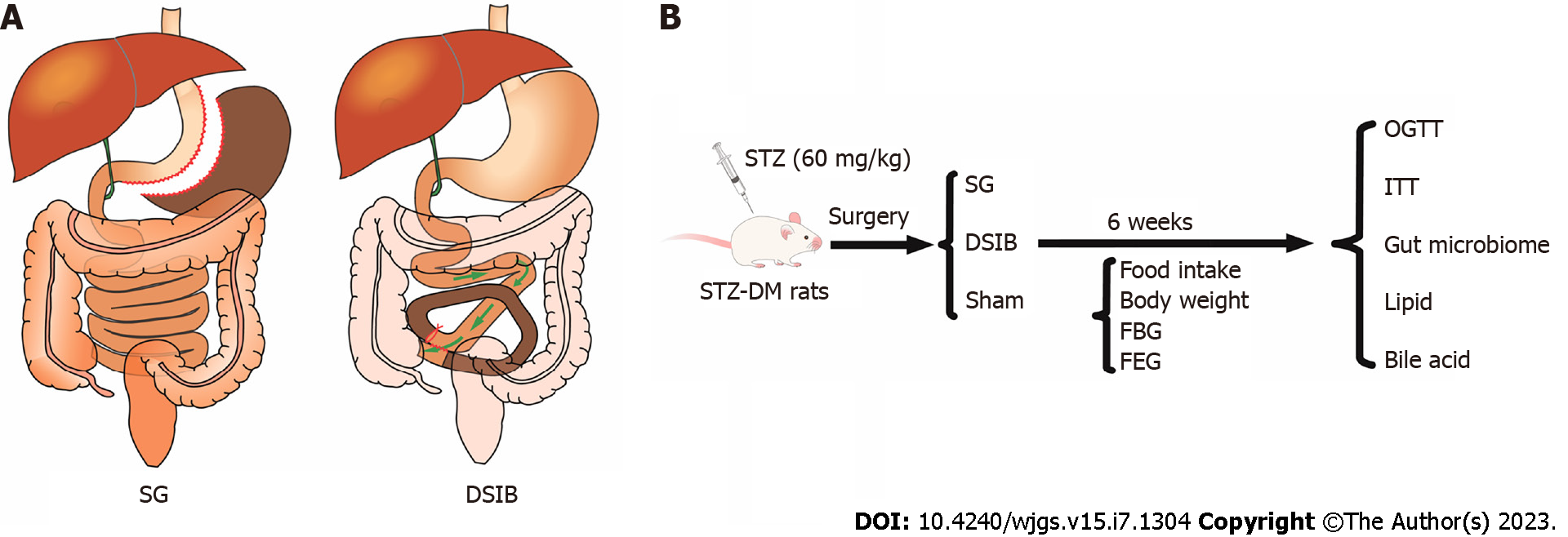Copyright
©The Author(s) 2023.
World J Gastrointest Surg. Jul 27, 2023; 15(7): 1304-1316
Published online Jul 27, 2023. doi: 10.4240/wjgs.v15.i7.1304
Published online Jul 27, 2023. doi: 10.4240/wjgs.v15.i7.1304
Figure 1 Schematic diagram of the operation and experimental flow chart.
A: Sleeve gastrectomy (SG) with distal small bowel bypass (DSIB); B: Experimental design schedule (SG n = 5, DSIB n = 6, sham n = 5). Sleeve gastrectomy: the lesser curved side of the stomach is preserved and 70% to 80% of the greater curved side of the stomach is resected; distal small bowel bypass: the reference point is near the ileocecal region. From this point to 40 cm distal to the flexural ligament, approximately 60% of the entire length of the small bowel is left open and intestinal continuity is restored by lateral anastomosis of the proximal jejunum and ileum. Lumenal occlusion is performed in the first part of the bypass section by means of a 0-gauge wire. Postprandial blood glucose, feeding glucose, glucose tolerance test, insulin sensitivity test, sham-operated control group. DSIB: Distal small bowel bypass; STZ-DM: Rats with streptozotocin-induced nonobese diabetes; FBG: Fasting blood glucose; ITT: Insulin tolerance test; SG: Sleeve gastrectomy; STZ: Streptozotocin; OGTT: Oral glucose tolerance test.
- Citation: Luo X, Tan C, Tao F, Xu CY, Zheng ZH, Pang Q, He XA, Cao JQ, Duan JY. Differences in metabolic improvement after metabolic surgery are linked to the gut microbiota in non-obese diabetic rats. World J Gastrointest Surg 2023; 15(7): 1304-1316
- URL: https://www.wjgnet.com/1948-9366/full/v15/i7/1304.htm
- DOI: https://dx.doi.org/10.4240/wjgs.v15.i7.1304









